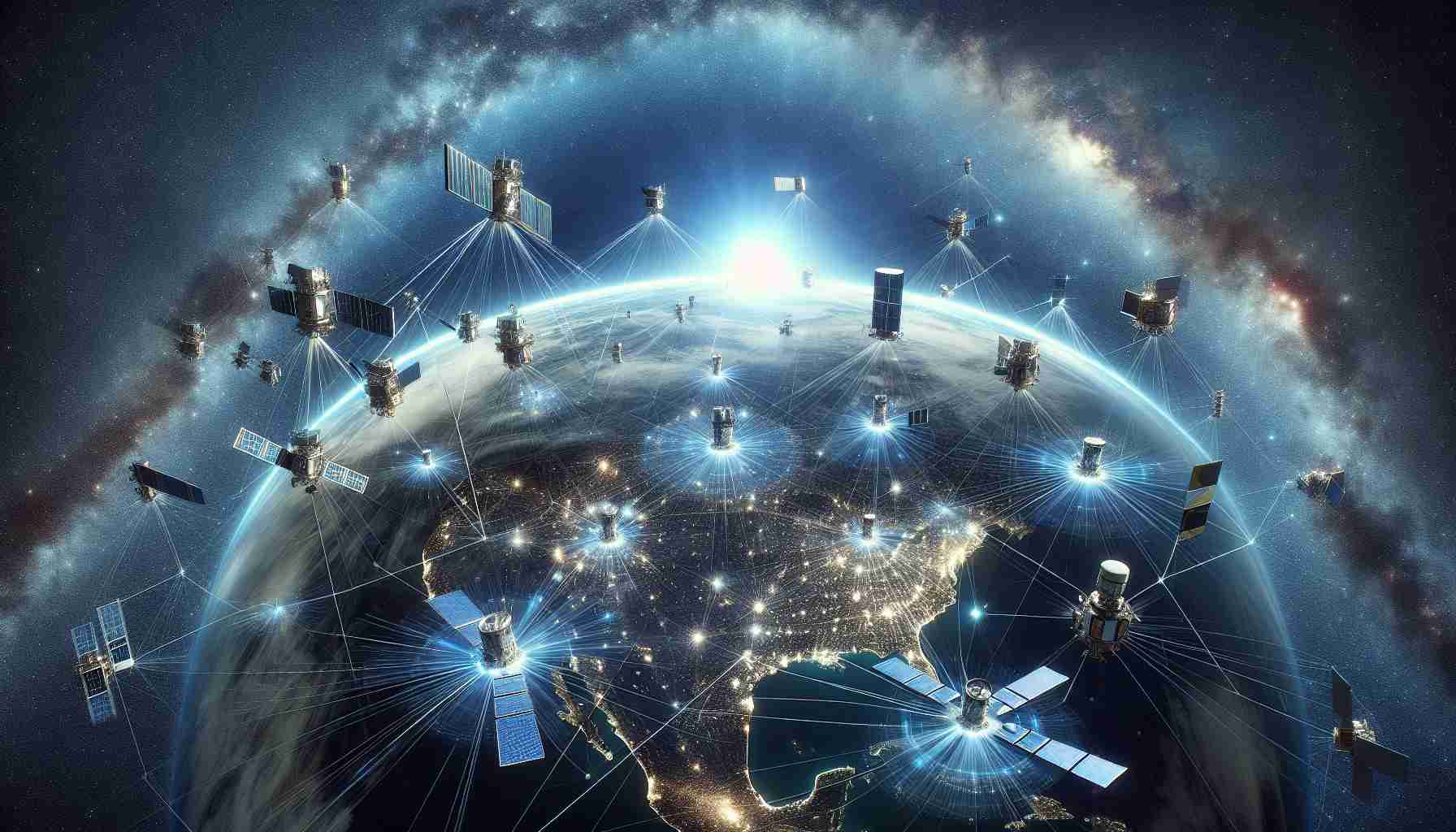
The global satellite IoT market is on the brink of significant transformation, poised to experience substantial growth in the coming years. Recent analysis by Berg Insight indicates a remarkable increase in subscribers, with numbers climbing from over 5.1 million in 2023 to an estimated 26.7 million by 2028. This surge represents an impressive compound annual growth rate of 39.2 percent.
The limited coverage of terrestrial connectivity, which reaches only about 10 percent of the Earth’s surface, highlights the immense potential for satellite IoT communications. This technology is particularly advantageous in remote areas, enhancing capabilities in sectors such as agriculture, transportation, and energy exploration.
Competition in this arena is intensifying, as traditional satellite operators face challenges from approximately 40 new entrants eager to claim their share of the market. Among the key players are Iridium, Orbcomm, and Globalstar, with Iridium currently leading the way, showing a 17 percent uptick in their subscriber base.
New startups are also making their mark, introducing innovative satellite solutions. Companies like Astrocast and SpaceX’s Swarm Technologies are pioneering low-earth orbit satellite systems, while hybrid connectivity models are gaining traction.
Partnerships between satellite and mobile operators are paving the way for a new era of integrated communications. The evolution towards seamless global connectivity ensures a bright future for IoT advancements, merging terrestrial and satellite networks to meet diverse needs.
The Future of Satellite IoT: An Expanding Frontier
As we move deeper into the 21st century, the satellite IoT landscape is set to undergo transformative changes driven by technological advancements and growing market demands. The integration of satellite technology with IoT capabilities presents a promising frontier, but it also raises crucial questions and challenges that must be addressed.
Key Questions and Answers:
1. What is Satellite IoT, and how does it differ from traditional IoT?
Satellite IoT (Internet of Things) refers to the use of satellites to connect devices and transmit data, especially in remote or rural areas where terrestrial networks are insufficient. Unlike traditional IoT, which relies on ground-based networks, satellite IoT can provide connectivity globally, irrespective of geographic barriers.
2. What are the main advantages of Satellite IoT?
– Global Coverage: Satellite IoT can reach regions where terrestrial networks are unavailable, making it essential for industries operating in remote areas.
– Real-time Data Transmission: It supports the fast transmission of critical data, vital for applications in logistics, agriculture, and disaster response.
– Scalability: Satellite IoT systems can easily accommodate a growing number of devices, enhancing their applicability across various sectors.
3. What are the disadvantages and challenges?
– Latency Issues: Satellite communications typically have higher latency compared to terrestrial connections due to the distance signals must travel, which can affect time-sensitive applications.
– Cost: Deploying and maintaining satellite IoT systems can be significantly more expensive than terrestrial alternatives, which may limit accessibility for some businesses.
– Regulatory Hurdles: Navigating international regulations for satellite launches and operations can be complex and time-consuming.
– Interference and Security Risks: Satellites can be vulnerable to interference and cyber threats, raising questions about data security.
Key Challenges and Controversies:
The satellite IoT industry faces multifaceted challenges. One major concern involves the saturation of low Earth orbit (LEO) satellites, as multiple companies launch vast constellations, raising the risk of collisions and generating space debris. Moreover, the potential for monopolization by a few dominant companies could hinder innovation and limit consumer options.
There is also an ongoing debate regarding the environmental impact of satellite launches and the long-term sustainability of maintaining large satellite networks. As the industry grows, ensuring that it remains environmentally responsible while providing necessary services will be crucial.
Market Dynamics:
The market for satellite IoT is experiencing a boom, with major players like SpaceX, OneWeb, and Amazon’s Project Kuiper joining the fray alongside established names such as Iridium and Globalstar. Such competition fosters innovation and reduces costs, ultimately benefiting end-users. Emerging technologies, such as artificial intelligence and machine learning, are being incorporated into satellite IoT systems to enhance data analytics capabilities and improve decision-making.
The Path Forward:
The future of satellite IoT hinges on collaboration among stakeholders, including satellite manufacturers, service providers, and regulatory bodies. Building partnerships and alliances will facilitate the sharing of resources and knowledge, driving the industry toward achieving seamless global connectivity.
In conclusion, as the satellite IoT market evolves, it is essential for stakeholders to collaboratively address the existing challenges while harnessing its vast potential to transform industries. The ongoing integration of satellite and terrestrial networks signals a new era of connectivity that will redefine how we interact with technology in our daily lives.
For further exploration of this growing sector, visit BBC for a broad perspective on technology trends and advancements.



